Introduction
Welcome to a world where the ordinary transforms into the extraordinary—welcome to the magic of nitinol! These remarkable nitinol paperclips are not just your average office supplies; they possess an enchanting ability to bend and twist in ways that defy expectations. With a little heat, these paper clip marvels can perform self-bending tricks that will leave you and your audience spellbound.
Discover the Magic of Nitinol
Nitinol, a unique alloy of nickel and titanium, brings a touch of wonder to everyday objects like paper clips. When you hold a nitinol paperclip in your hand, you're not merely gripping a piece of metal; you're holding a piece of science that can remember its shape and return to it when heated. The magic lies in its ability to transition between two distinct forms: one at room temperature and another when warmed up, making it a fascinating topic for both science enthusiasts and casual observers alike.
How Nitinol Paperclips Work
So how does this nifty little contraption—a simple paper clip—become an object of fascination? The secret is in its composition; nitinol paperclips are engineered with shape memory properties that allow them to revert back to their original form after being deformed. When you heat these clever clips, they spring back into shape, showcasing their unique ability to dance around in front of your eyes—a delightful spectacle that turns any mundane task into an unforgettable experience.
The Science Behind Self-Bending Tricks
At the heart of these self-bending tricks lies the intricate science behind shape memory alloys (SMAs). When discussing nitinol paperclips, it's essential to understand how temperature changes affect their molecular structure, enabling them to bend and twist like magic! This transformation process is not only captivating but also highlights how materials can be designed for fun while offering practical applications—making every moment spent with these clever clips feel like an adventure into the realm of science.
What is Nitinol?
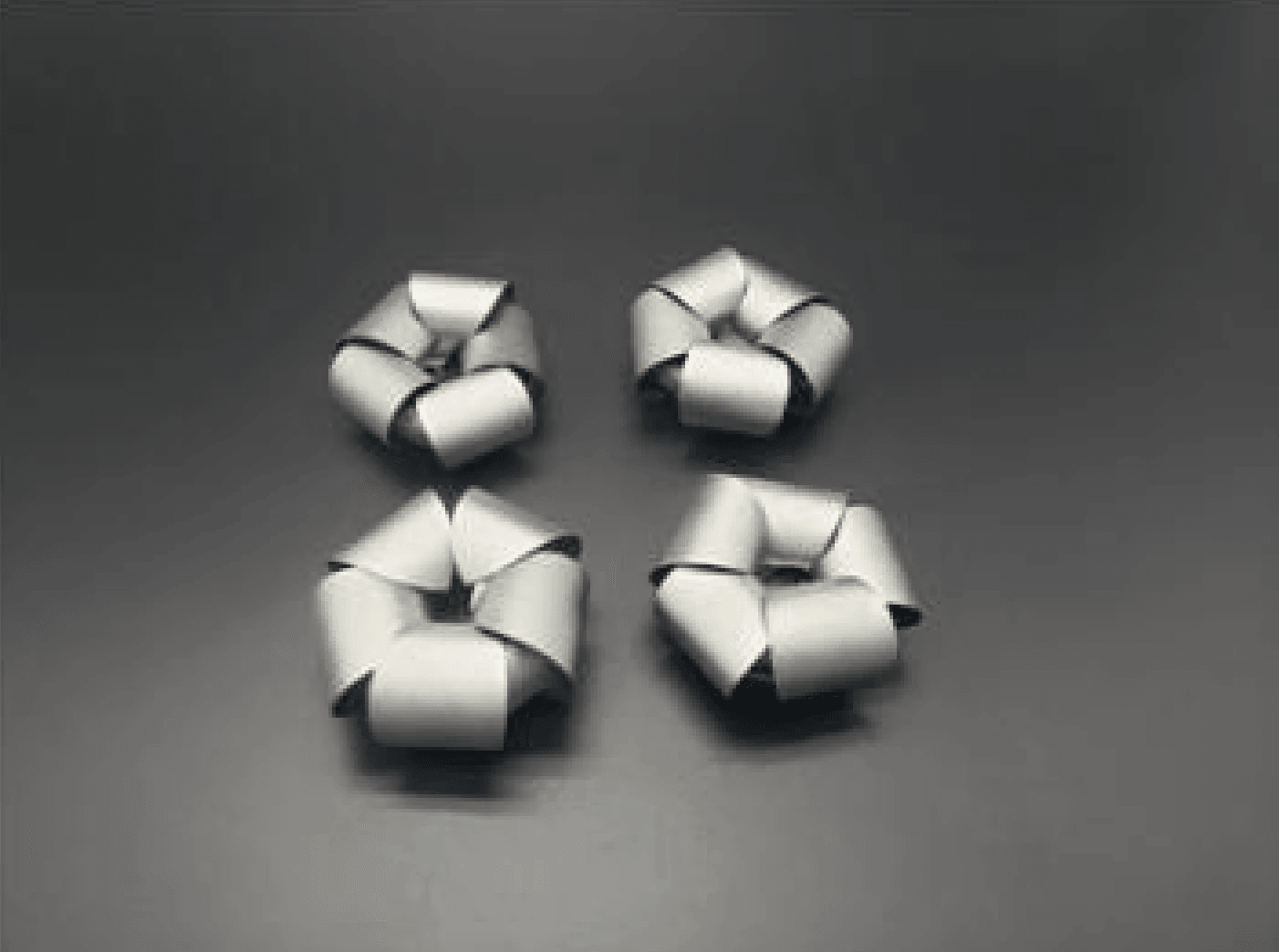
Nitinol, a fascinating alloy of nickel and titanium, is not just your average metal; it’s a superhero in disguise! Known for its unique ability to return to a predetermined shape when heated, this alloy has become the backbone of many innovative applications. Among these applications are the charming nitinol paperclips that can bend and twist with a little warmth, captivating anyone who witnesses their magic.
An Overview of Nitinol Alloys
Nitinol alloys are crafted from a precise combination of nickel and titanium, resulting in properties that are simply out of this world. The name itself is derived from its composition—Nickel Titanium Naval Ordnance Laboratory—where it was first developed in the 1960s. These paper clip clips have since evolved into much more than just office supplies; they represent cutting-edge technology with incredible potential.
In addition to nitinol paperclips, this alloy finds use in various fields including medicine, robotics, and aerospace engineering. The versatility of nitinol allows it to be shaped into intricate forms while retaining its unique properties. This means that whether you’re using a simple paper clip or designing complex machinery, nitinol alloys bring an element of reliability and innovation.
The Unique Properties of Nitinol
What sets nitinol apart from other materials? For starters, its shape memory effect allows it to remember its original form after being deformed—like a boomerang that always comes back! This property makes it ideal for applications ranging from self-closing medical devices to our beloved nitinol paperclips that spring back into shape with just a bit of heat.
Another remarkable feature is superelasticity; when subjected to stress beyond the normal limits, these alloys can stretch significantly without permanent deformation. Imagine bending a standard paper clip only for it to snap back; now imagine doing that with a nitinol paperclip! This elasticity ensures durability and performance across various uses—from mundane office tasks involving papers with clips to high-tech engineering solutions.
Understanding Shape Memory Alloys
Shape memory alloys (SMAs) like nitinol operate on principles that seem almost magical at first glance. When cooled below their transformation temperature, SMAs can be deformed easily; however, once heated above this threshold, they revert to their original shape as if by magic! This phenomenon allows for incredible applications where movement or action is required without mechanical systems—think about how your trusty paper clip can transform under heat!
The science behind SMAs involves phases: martensite (the low-temperature phase) and austenite (the high-temperature phase). Each phase exhibits different mechanical properties which enable those mesmerizing tricks performed by nitinol paperclips. By understanding these phases and their transitions, engineers can design systems that harness the power of SMAs effectively—whether it's creating surgical tools or enhancing everyday items like your favorite paper clipper!
The Mechanics of the Magic Trick
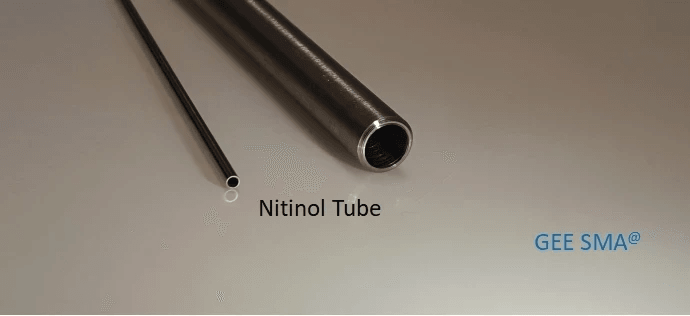
Nitinol paperclips are not just your average office supplies; they are the stars of a mesmerizing magic trick that can leave anyone in awe. When you see a paper clip suddenly bending or straightening before your eyes, it’s hard to believe that this transformation is powered by science rather than sleight of hand. In this section, we’ll delve into how these nifty little gadgets create an illusion that feels almost like magic.
Creating the Paperclip Illusion
To create the paperclip illusion, one must first understand the unique properties of nitinol paperclips. These clever clips can switch between shapes based on temperature changes, making them perfect for tricks that seem impossible at first glance. By simply applying heat—whether through warm water or a hairdryer—you can manipulate a regular paper clip into bending and twisting in ways that will astonish your audience.
The trick lies in how you present it: hold up the nitinol paperclip and show it in its original form before applying heat. Once heated, watch as it transforms right before your eyes! The moment when a simple paper clip becomes an animated object is what makes this illusion so captivating.
How Heat Influences Nitinol Paperclips
Heat plays a crucial role in the performance of nitinol paperclips, acting as the catalyst for their magical transformation. When you expose these special clips to heat, they undergo a phase change from their martensite state to their austenite state, allowing them to revert to their memorized shape—often one that bends or curls dramatically. This process is what gives nitinol its reputation as a shape memory alloy.
Interestingly enough, once you remove the heat source and allow the nitinol paperclip to cool down again, it will return to its original form—a classic case of “what goes around comes around.” This dynamic relationship between heat and shape allows for endless possibilities when performing tricks with these remarkable materials. With just some basic knowledge about how temperature affects these clips, anyone can become a master magician with just a simple piece of stationery.
The Transformation Process Explained
Understanding the transformation process is key to unlocking all the potential tricks you can perform with nitinol paperclips. Initially shaped like any ordinary metal clip, when heated above its transition temperature (usually around 90°C), it begins an incredible metamorphosis into its memorized form—this could be anything from curling up tightly to forming intricate shapes like spirals or loops.
This transformation isn’t merely about bending; it's also about timing and control over temperature application which adds layers of complexity to your performance. For instance, if you're using hot water versus direct flame from a lighter or hairdryer, each method will yield different results based on how quickly and evenly heat is applied across the entire surface area of the nitinol clip.
In summary, by mastering both heating techniques and understanding how temperature influences these nifty little gadgets known as nitinol paperclips, you'll be well on your way to creating mind-boggling illusions that'll make everyone question reality—and perhaps even reconsider what they thought about ordinary office supplies!
Nitinol Paperclips in Everyday Life
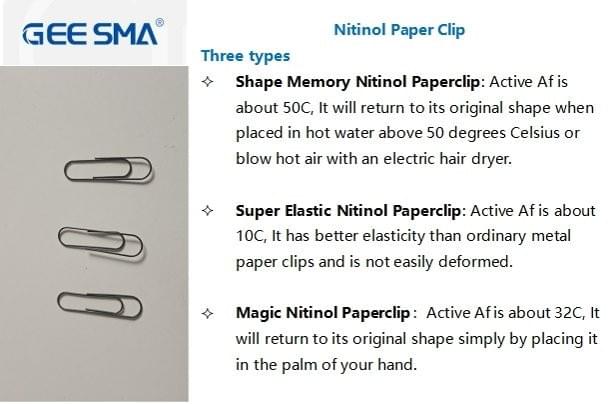
Nitinol paperclips are not just the stars of magic shows; they also have a plethora of practical applications that make them indispensable in various fields. These unique paper clips, made from shape memory alloys, can provide solutions that conventional materials simply cannot match. From medical devices to robotics, the versatility of nitinol is transforming everyday tasks and industries alike.
Beyond Magic: Practical Uses of Nitinol
Beyond their captivating magic tricks, nitinol paperclips serve numerous practical functions in our daily lives. For instance, in the medical field, nitinol is often used in stents and guidewires due to its ability to return to a pre-defined shape when heated. This property allows for minimal invasiveness during procedures, making it easier for doctors to navigate through complex body structures while ensuring patient safety.
In addition to healthcare, nitinol paperclips are also finding their way into consumer products like eyeglasses and orthodontic devices. The flexibility and strength of these materials mean that a simple paper clip can be transformed into a highly functional component that adapts to varying conditions without losing integrity. Thus, these remarkable materials go far beyond mere office supplies—nitinol has truly become an essential part of modern engineering solutions.
Innovative Applications of Nitinol Alloys
The innovative applications of nitinol alloys extend well beyond traditional uses like holding papers together with a simple clip. In aerospace engineering, for instance, nitinol components are used in actuators and couplings due to their lightweight yet strong properties.
Moreover, the automotive industry has begun adopting nitinol technology for various applications such as self-adjusting seat belts and other safety mechanisms that require quick responses under different conditions. Imagine a world where your seatbelt tightens automatically upon impact! With the continued development of nitinol paperclips and similar materials, we may soon see even more groundbreaking innovations across multiple sectors.
GEE SMA's Role in Nitinol Development
GEE SMA (Shape Memory Alloys) plays an instrumental role in advancing the development and application of nitinol alloys around the globe. By focusing on research and innovation tailored specifically towards enhancing the properties and usability of these materials, GEE SMA ensures that products like our beloved paper clip evolve with time while meeting industry demands efficiently. Their contributions have led to breakthroughs that make everyday items more functional—who knew your average paper with clip could hold such potential?
Furthermore, GEE SMA collaborates with various industries—from healthcare providers developing new surgical tools using nitinol paperclips to aerospace engineers pushing boundaries with innovative designs—all while keeping sustainability at the forefront of their initiatives. As we continue exploring what’s possible with this fascinating material, it’s clear that GEE SMA is paving the way for future advancements that will redefine how we interact with technology every day.
The Engineering Behind Nitinol Shape Memory Alloys
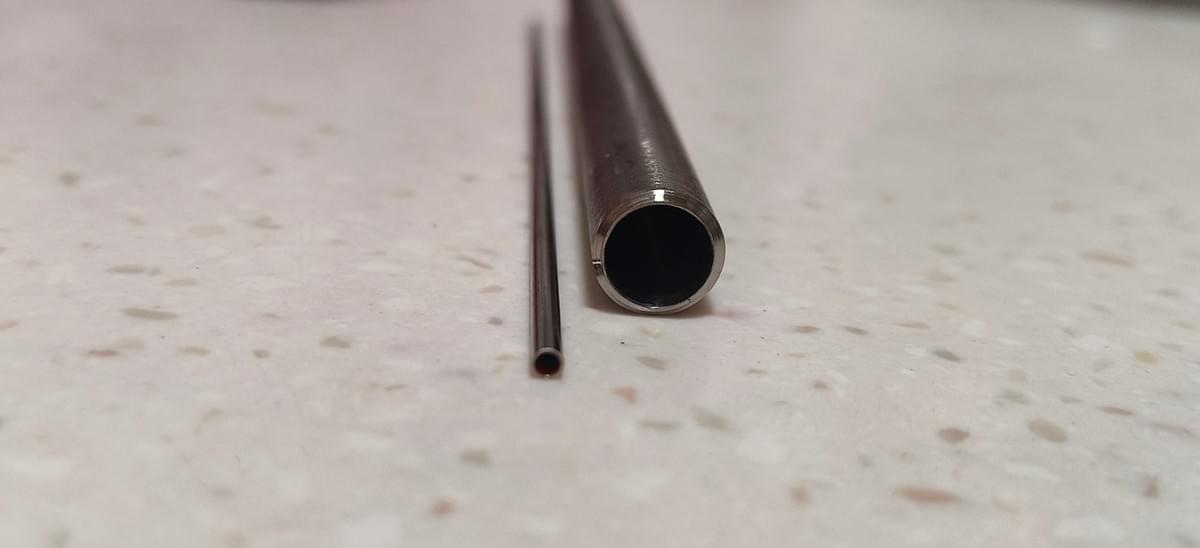
Nitinol shape memory alloys are not just for magic tricks; they are marvels of engineering designed to perform in extreme environments. Engineers have harnessed the unique properties of nitinol paperclips to create materials that can withstand harsh conditions, making them invaluable in various industries. With the ability to return to a predetermined shape when heated, these materials have found applications far beyond simple office supplies.
Designing for Extreme Environments
These specialized alloys can endure high temperatures and significant stress without losing their functionality, making them ideal for aerospace and medical applications. Imagine a paper clip that can hold papers together while floating through the harsh vacuum of space—now that's some serious engineering!
GEE SMA's Contribution to Space Missions
GEE SMA has played a pivotal role in advancing nitinol technology for space missions, leveraging its unique properties for innovative solutions. Their work with nitinol paperclips has led to the development of components that can operate effectively in the challenging conditions of outer space, where traditional materials might fail. From securing instruments on satellites to functioning as actuators in spacecraft, GEE SMA's contributions showcase how versatile these seemingly simple paper clips can be.
How Nitinol Powers Chang’e and Tianwen Missions
The Chang’e and Tianwen missions highlight the incredible potential of nitinol in real-world applications beyond mere magic tricks or office supplies like standard paper clips. In these ambitious lunar and Martian exploration projects, nitinol components have been utilized to deploy instruments and manage thermal systems effectively under extreme temperature fluctuations. The ability of nitinol paperclips to change shape based on heat plays a crucial role in ensuring mission success by allowing equipment to adapt dynamically during critical operations.
Experimenting with Nitinol Paperclips
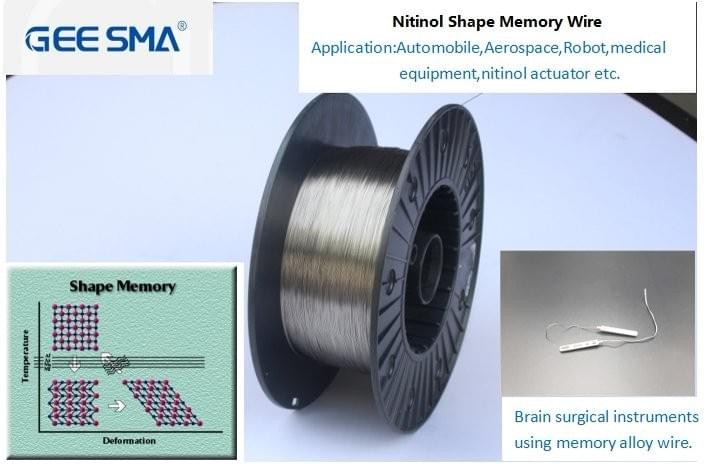
Nitinol paperclips are not just magical; they are a fantastic way to explore the fascinating world of shape memory alloys. With a little creativity and some basic materials, you can impress friends and family with tricks that showcase the unique properties of these remarkable paper clips. Let’s dive into some simple experiments that will let you bend, twist, and transform your nitinol paperclips into captivating illusions.
Simple Tricks You Can Try
One of the simplest tricks you can perform with nitinol paperclips is the self-bending clip illusion. Start by heating your nitinol paperclip in hot water or using a heat gun until it becomes pliable. Once it’s warm enough, bend it into an interesting shape—perhaps a spiral or a heart—and then cool it down in ice water; watch as it returns to its original form when heated again!
Another fun trick involves using two nitinol paperclips to create a paper clip clip effect. Shape one paperclip into an open loop and leave the other intact. When you heat the first one, it will curl up around the second one, creating an illusion of connection that is sure to amaze onlookers.
Finally, try combining your nitinol paperclip with regular items like a piece of paper with clip attached to see how they interact under different temperatures. This adds another layer of intrigue as you manipulate both materials while showcasing the unique properties of your nitinol creation.
Safely Handling Nitinol Materials
While experimenting with nitinol paperclips can be exciting, safety should always come first! When handling heated materials, make sure to use gloves or tongs to avoid burns—those clips get hot! Additionally, ensure that you're working in a well-ventilated area if you're using heat guns or other heating devices.
Always keep an eye on your experiment; never leave heated nitinol unattended! If you’re working with children or inexperienced individuals, provide supervision and guidance throughout the process so everyone can enjoy safely exploring these amazing materials together.
Lastly, store your nitinol paperclips in a cool place after use to maintain their shape memory characteristics for future tricks. Keeping them safe ensures that every time you pull out those nifty clips for another round of magic, they’ll be ready for action!
Tips for Creating Your Own Illusions
Creating illusions with nitinol paperclips is all about experimentation and creativity! Start by brainstorming different shapes or forms that would look impressive when transformed back into their original state—think about everyday objects like hearts or stars made from multiple clips intertwined together.
Consider incorporating additional elements such as colored water or light sources to enhance visual effects during your demonstrations—this adds flair and draws attention! For example, immersing your shaped clip in colored water creates an eye-catching contrast when it's revealed after transformation.
Don’t hesitate to document your experiments along the way; take notes on what works best and what doesn’t so you can refine your techniques over time. The more creative ideas you try out with those nifty nitinol paperclips—the more enchanting illusions you'll craft!
Conclusion
In wrapping up our exploration of nitinol paperclips, it’s clear that these seemingly simple objects hold a wealth of potential, both in the realm of magic and beyond. The future promises even more innovative uses for these remarkable materials, as they continue to mesmerize audiences and engineers alike. As we look forward, the possibilities for nitinol paperclips seem limitless, transforming how we think about everyday items.
The Future of Nitinol in Magic and Beyond
The captivating tricks performed with nitinol paperclips are just the tip of the iceberg when it comes to their future applications in magic. Imagine a world where magicians can create even more complex illusions using advanced nitinol technology—think floating objects or bending shapes at will! As artists and scientists collaborate, we may see a new era where performance art meets cutting-edge engineering through the clever use of these shape memory alloys.
Nitinol's Impact on Engineering and Technology
Nitinol has already made significant strides in engineering fields, proving its worth beyond being just a whimsical paper clipper. Its unique properties allow for groundbreaking innovations in various industries such as robotics, medical devices, and aerospace technology. With each passing year, researchers discover new ways to harness the power of nitinol alloys—paving the way for smarter designs that enhance functionality while minimizing weight.
Why Nitinol Paperclips Are More Than Just Tricks
At first glance, one might think that nitinol paperclips are merely clever novelties used to perform tricks; however, they represent so much more than that. These ingenious little gadgets exemplify how science can turn ordinary items into extraordinary tools with real-world applications—like holding together important documents or serving as components in sophisticated machinery. So next time you pick up a paper clip or use a paper with clip to organize your notes, remember that behind those simple shapes lies a fascinating world of innovation waiting to be explored.

